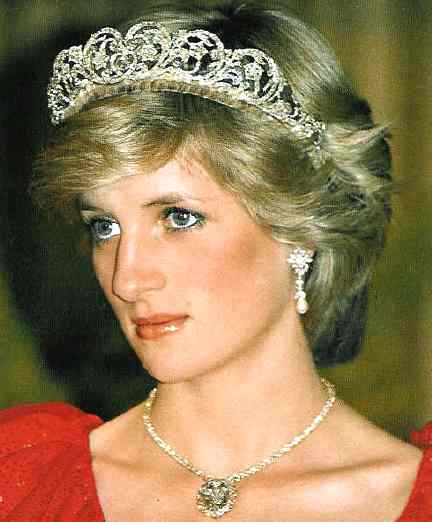Post by Salem6 on Oct 19, 2003 10:41:47 GMT

Diana, Princess of Wales (July 1, 1961 - August 31, 1997), also Duchess of Cornwall, etc, born the Hon. Diana Frances Spencer, was the wife of Charles, Prince of Wales, and the mother of Princes William and Harry of England.
Early Years
Diana was the youngest daughter of the Hon. Frances Ruth Burke-Roche (daughter of the fourth Baron Fermoy) and the Hon. Edward John Spencer, Viscount Althorp, making Diana a descendant of many of the kings of England, including Charles I, Charles II, and James II. She was also a great-granddaughter of Frances Ellen Work (the Hon. Mrs James Boothby Burke-Roche, later Mrs Aurel Batonyi), an American heiress whose father, Frank Work, was a prominent stockbroker. (Another descendant of Frances Work is American actor Oliver Platt.)
On the death of her paternal grandfather, Albert Edward John Spencer, 7th Earl Spencer in 1975, Lord Althorp became the eighth Earl Spencer, and his daughter acquired the courtesy title of Lady Diana Spencer. She was educated in Norfolk and at boarding school in Kent, and was regarded as an academically average student. At 16 she attended Institut Alpin Videmanette, a finishing school in Rougemont, Switzerland.
Marriage
In 1980, at the age of 19 she caught the eye of the Prince of Wales, Charles, who invited her to a polo match. A romance began and he proposed to her in February of 1981. The wedding took place at St Paul's Cathedral in London on July 29, 1981, in front of a massive global television audience.



Diana gave birth to two children, Prince William in 1982 and Prince Harry in 1984. During the mid-to-late 1980s she became well known for her support of charity projects, and is given considerable credit for her campaigning against the use of landmines and diminishing the stigma associated with AIDS.
In the early 1990s, her marriage to Charles fell apart, an event sensationalised by the world media. Although the couple separated in 1992, the divorce was not finalised until August 1996.
Death and Legacy

The unofficial Diana memorial (Flame of Liberty) above the entrance to the Paris tunnel in which she died. Picture taken in July 2001.
August 31, 1997 Diana was killed in a car accident in the Alma Tunnel, Paris, along with her companion Dodi Al-Fayed, with whom she was romantically attached.
Although many allegations of conspiracy were made in the media at the time, it is generally accepted that her death was a genuine accident as a result of high speed when the chauffeur, intoxicated at the time, tried to elude the paparazzi. Her funeral at Westminster Abbey on September 6 drew very large crowds and worldwide television coverage.
In Paris, a monument near the entrance to the tunnel, called the Flamme de Liberté, (Flame of Liberty), had been adopted as a memorial due to its proximity to the fatal crash. Previously, this monument was connected with the donation of the Statue of Liberty by the French people to America, and its adoption has proved to be controversial. The messages of condolence have now been removed and its use as a Diana memorial seems to have been discontinued.
Her death was greeted with extraordinary public grief, and her funeral procession was attended by an estimated 6 million people. Flowers were thrown at the funeral procession for almost the entire length of the journey. Queen Elizabeth II made a notable change from standard royal protocol by bowing as the procession passed.
After her death there has still been a massive interest in her life, leading to industry dedicated to her memory, as well as Diana related souvenirs. The most contraversial idea was to make Diana a saint.
She is buried at Althorp in the United Kingdom on an island in the middle of a lake on her brother's estate. There is a visitor's centre that allows visitors to pay to see an exhibition about her and walk around the lake.
Diana was ranked third in the 100 Greatest Britons poll sponsored by the BBC and voted for by the public.


